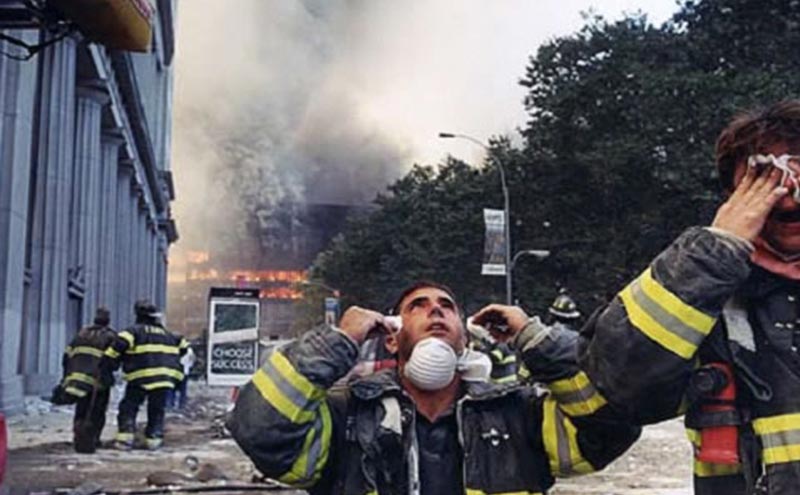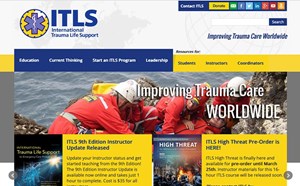
The National Disaster Life Support (NDLS) Program: Past, Present, and Future
The National Disaster Life Support Foundation is very pleased to have partnered with the American College of Emergency Physicians (ACEP) to provide disaster medicine training and to further develop the NDLS education materials.
The NDLS program began in the late 1990’s with a realization that there was a lack of standardized training for medical and nursing providers who may be responding to disasters. Individuals were medically trained within their specialty to the same National Standard, however disaster specific education was not included in the majority of medical and nursing curricula .
Examples of the missing material included:
- Scene safety
- Standardized triage methodology
- Incident Management
- Identifying and requesting needed resources
- What constitutes a disaster
- Public Health impact of disasters
A team consisting of individuals from the Medical College of Georgia (MCG) and the University of Georgia (UGA) began planning a series of courses to address these shortfalls. As a curriculum began to emerge Senator Max Cleland (D, GA) took note and planned to request Congressional funding to support the effort. His formal request is documented in the Congressional Record – Senate dated September 10, 2001. The tragic events of the next day underscored the need for specialized training in support of disaster response. Initial funding was approved and the principals from this original effort sought to identity others who could contribute. The final development team included individuals from the American Medical Association (AMA), MCG, UGA, University of Texas South Western Medical Center (UTSW), and the University of Texas – Houston, School of Public Health. The initial family of courses were developed and included: Core Disaster Life Support (CDLS), Basic Disaster Life Support (BDLS), and Advanced Disaster Life Support (ADLS).
CDLS is a 4-hour introductory course for non-medical personnel (such as fire and police) who may be at the scene of the event and need an understanding of the risks, support needs, and other unique aspects of the scene. BDLS is an 8-hour course that introduces concepts and principles to prepare health professionals for the management of injuries and illnesses caused by disasters and public health emergencies. BDLS serves as a prerequisite for ADLS, a 2-day course putting into practice the principals covered in BDLS. The two days include hands-on exercises for personal protective equipment and patient decontamination, patient triage, surge capacity, casualty management, and a mass-casualty exercise using mock victims. An accompanying student manual supports each course together with presentation slides. The slides and manuals are regularly updated to maintain currency.
The NDLSF established an affiliated membership-based organization for the purpose of overseeing the development and revision of the curriculum. This organization is the National Disaster Life Support Education Consortium (NDLSEC).
One of the unifying components of each course is the employment of a memory mnemonic easily employed in the field.
It is referred to as the “DISASTER Paradigm”:
D - Detection
I - Incident Management
S - Safety and Security
A - Assess Hazards
S - Support
T - Triage and Treatment
E - Evacuation
R - Recovery
Another unique attribute of the courses is the simple and unambiguous definition of a disaster: when your needs exceed your resources or more simply “NEEDS > RESOURCES.”
These standardized, competency-based, all-hazards, and multi-disciplinary courses became very popular and it was soon realized that the management and oversight of the program was cumbersome for a consortium of four universities. In 2004 those universities established the National Disaster Life Support Foundation (NDLSF), a 501(c)3 Non-Profit Foundation, to manage the program. The NDLSF established policies for the maintenance and propagation of the courses utilizing a network of accredited training centers. To date approximately 150,000 individuals have been trained through 79 domestic centers and 17 International Training Centers.
The courses are currently taught in:
- -Afghanistan
- India
- Japan
- Kuwait
- Mexico
- Oman
- Saudi Arabia
- South Korea
- Shanghai, China
- Thailand
- United Arab Emirates
- United States
Through experiences associated with the program the NDLSF identified additional opportunities to provide other unique training. In 2015 two additional courses were added to the NDLS suite of courses- Basic and Advanced Certified Hospital Emergency Coordinator (CHEC). The CHEC Certification Program is designed within the framework of healthcare regulation and applies the proven “all-hazards” approach during emergencies and disasters.
Certification includes concepts of:
- Mitigation
- Preparedness
- Response
- Recovery
The CHEC courses use didactic lecture, facilitated discussion, performance-based training, and practical exercise instructional techniques to credential the students.
An in-depth course covering Personal Protective Equipment and Patient Decontamination is currently under development. This course will employ a combination of lecture, demonstration, and hands-on training. It will cover chemical, radiation, and biologic contamination and the unique aspects of decontamination associated with each.
The NDLSEC Annual Meeting will be held in conjunction with ACEP’s 2016 Annual Scientific Assembly in Las Vegas, NV October 16 – 18, 2016. At this time the NDLSF is beginning the revision process of the NDLS training courses and are seeking additional experts to contribute to the process. The meeting is open, and all ACEP members are welcome to participate. At this meeting we will be providing an overview of the revision process and begin the committee work of the revision process. We are looking forward to seeing you in Las Vegas.
Jack Horner
Executive Director, The National Disaster Life Support Foundation



